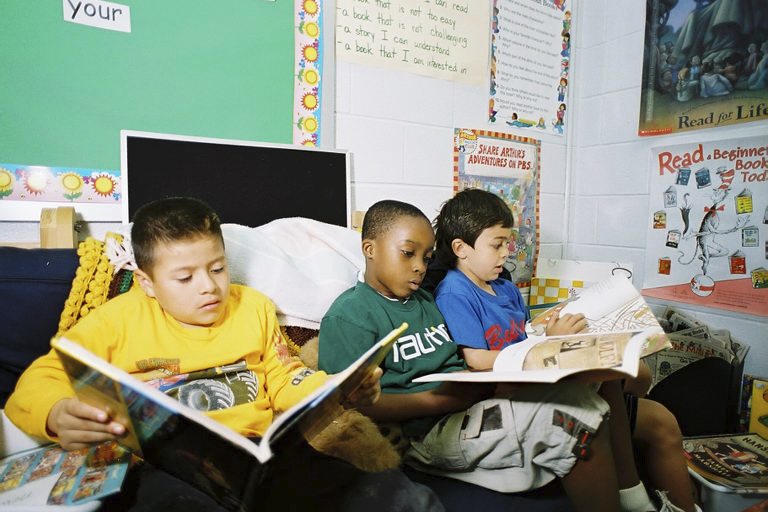The week before the US presidential election, then-Democratic Vice Presidential Candidate Tim Kaine made history by delivering the first presidential campaign speech conducted entirely in Spanish. “No hablo español perfectamente,” he began, adopting the language associated with immigration into the United States. In Spanish, Senator Kaine criticized President-elect Donald Trump’s immigration policies, which Trump has justified, in part, by arguing that some immigrants are “bad hombres.” Senator Kaine then aligned himself with the “bilingual families and multilingual families [that] contribute to our diversity and our economy.” His historic speech reflects the role of language in the intense debate over immigration, a debate that has been at the forefront of this election season. As 2016 is characterized by the most diverse electorate in US history, bilingualism has become an increasingly important part of American politics and culture.
Public discourse surrounding bilingualism has played out most fiercely in California, which has the largest minority population in the United States. In July 2014, the Latino population in California officially surpassed the white population to assume the demographic plurality, and as of 2015, only 56.5 percent percent of Californians speak English as their sole language at home. The earliest impacts of this demographic evolution are playing out in the state’s public schools. This growing ethnic and linguistic diversity has meant that there are now 1.4 million English language learners – broadly defined as K-12 students who benefit from supplementary language programs – in the California public education system.
Last month, California voters overwhelmingly repealed the 1998 mandate requiring English-only instruction and restored bilingual education in public schools. Under the current education system, English language learners are automatically enrolled in immersive instruction, and bilingual programs in public schools are almost nonexistent. This model stems from Proposition 227, which required California public schools to teach English language learners in special classes that would be taught entirely in English – a policy that replaced bilingual programs with immersive ones. The requirement could only be waived if the parent or guardian presented evidence that the child already scored at or above the state average on English standardized tests or had special needs and required an alternate course of educational study. The campaign for Proposition 227, led by Silicon Valley software entrepreneur Ron Unz, claimed that the primary cause of the achievement gap between native speakers and English learners was the segregation of English learners into separate and substandard bilingual education classes. Unz argued that the courses taught in native languages did not adequately prepare the students for eventual integration into the common curricula because they were often less rigorous and delayed the students’ linguistic and academic growth.
Proposition 58 will essentially overrule the policies of Proposition 227. This new policy emerged following an evaluation of the educational outcomes after 18 years of these purportedly superior English-only programs. The statewide Academic Performance Index, conducted by the California Department of Education, shows stagnating growth since 2007 and a negative growth rate reported for the most recent year recorded, 2012-2013. The UCLA Civil Rights Project’s report on Proposition 227 demonstrates that although bilingual language programs show fewer relative progress in the short term (annual comparisons), the language programs produce greater rates of achievement than English-only programs after two or more subsequent years of implementation. The conclusion UCLA reached from analyzing this data is that “dismantling bilingual education in California disrupted any coherence that may have existed in the system, harmed students in the immediate term, and on average created no overall benefit.”
Bilingual education advocates argue that the passage of Proposition 58 will narrow the achievement gap and attain the fluency rates that English-only programs have not by increasing flexibility, offering school districts and parents more local control over their children’s schooling, and providing more tailored instruction. At Cahuenga Elementary, one of the few bilingual education programs in the state, Latino students halved their performance deficit in five years, and the school currently achieves higher levels in math and English proficiency than the overall city rate in Los Angeles. Rather than immediate immersion, bilingual programs foster a more gradual and supportive form of academic development that produces higher achievement five to ten years after enactment. Francisco Rodriguez, the Vice President of the California Federation of Teachers, has stated that “it takes three to five years to be academically proficient in a new language, which means you lose in academics for three to five years…a student who is immersed in all English may be able to learn how to communicate in English faster but that does not mean that they fully understand the academic concepts on their grade level.”
But perhaps most importantly, the reintroduction of bilingual education to California bears immense symbolic and cultural significance especially in a country that the general election revealed to be more racially polarized and hostile to immigrants than many had expected. Bilingual education programs treat native languages not as a handicap to be overcome but rather as important cultural and educational resources that can bolster English learning. Rather than erasing the natural linguistic resources of nearly 20 percent of public school students from their academic lives, bilingual programs build on language competency and tell these students that the cultural and the academic can be integrated. Most bilingual schools have specially tailored curricula that engage the students and the community in multicultural classes, events, and programs. The bilingual education model recognizes that American people and American culture are no longer “English-only” and demands that the public education system reflect this multicultural reality.
